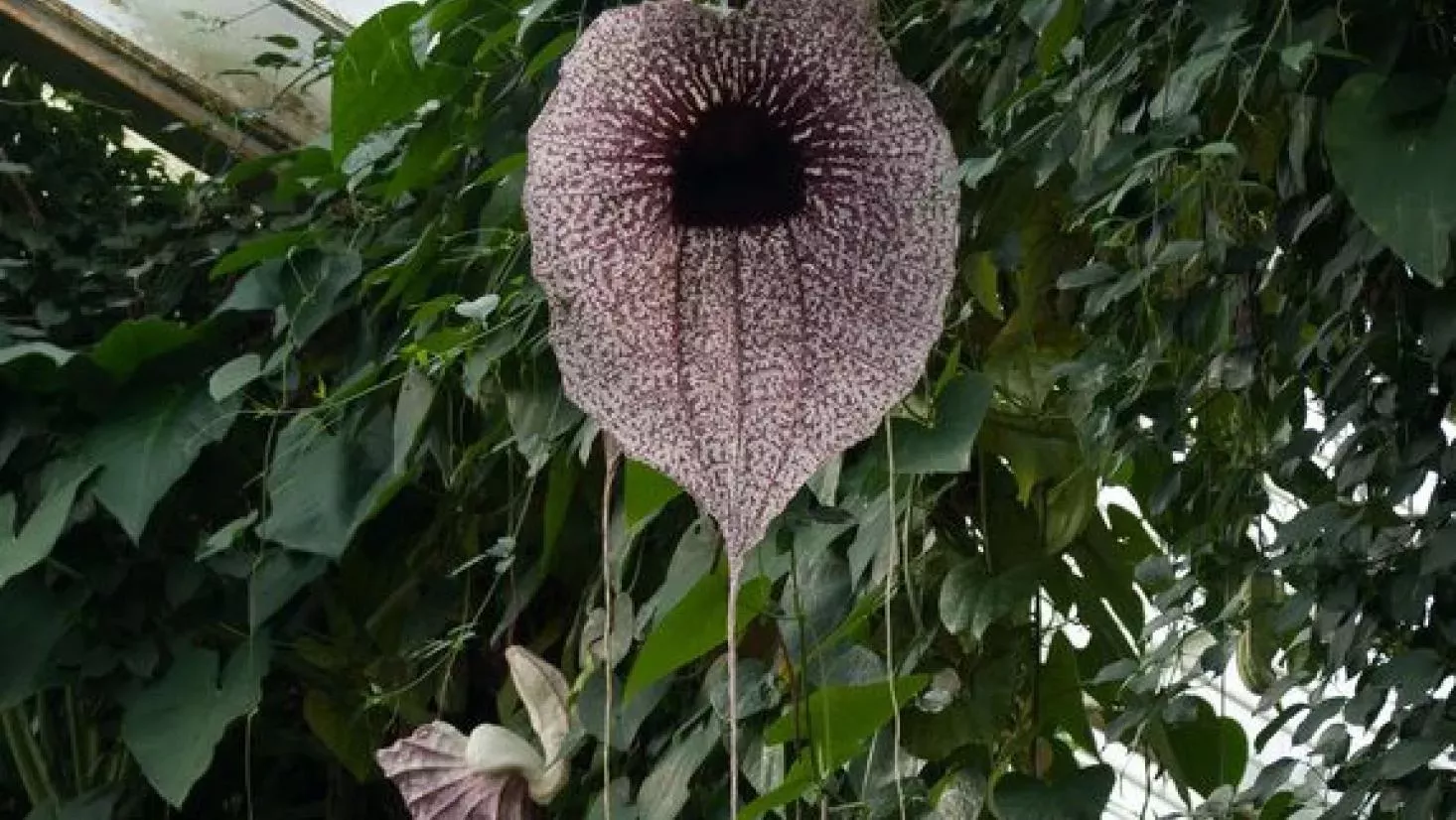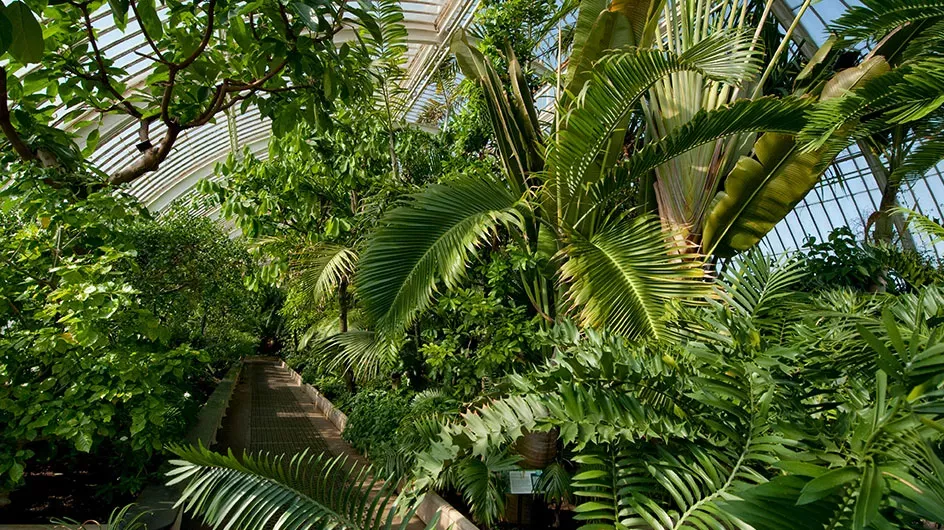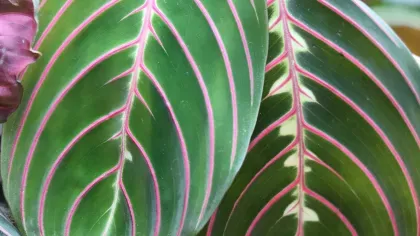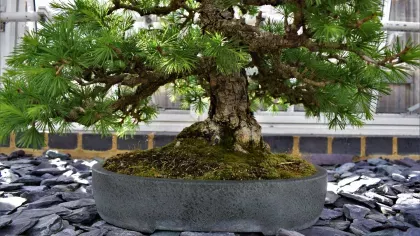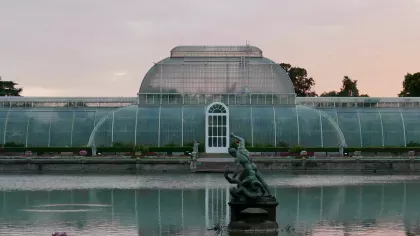5 September 2018
5 extraordinary plants you wouldn’t expect to find at Kew
From the mysterious to the bizarre, we explore some of Kew’s botanical oddities with Weird Plants book author Chris Thorogood.

The corpse flower
Titan arum (Amorphophallus titanum), which only grows in the forests of Sumatra, emits a nauseating odour of rotten meat. The smell is so bad, this giant is also known as the ‘corpse flower’. But why is it so smelly?
The answer is found with its pollinators – insects that feed on dead animals.
Titan arum mimics the smell of rotting flesh to attract these pollinators.
And if the smell wasn't enough, its purple-red bloom with green blotches looks like rotten meat too. Delicious – if you’re an insect.
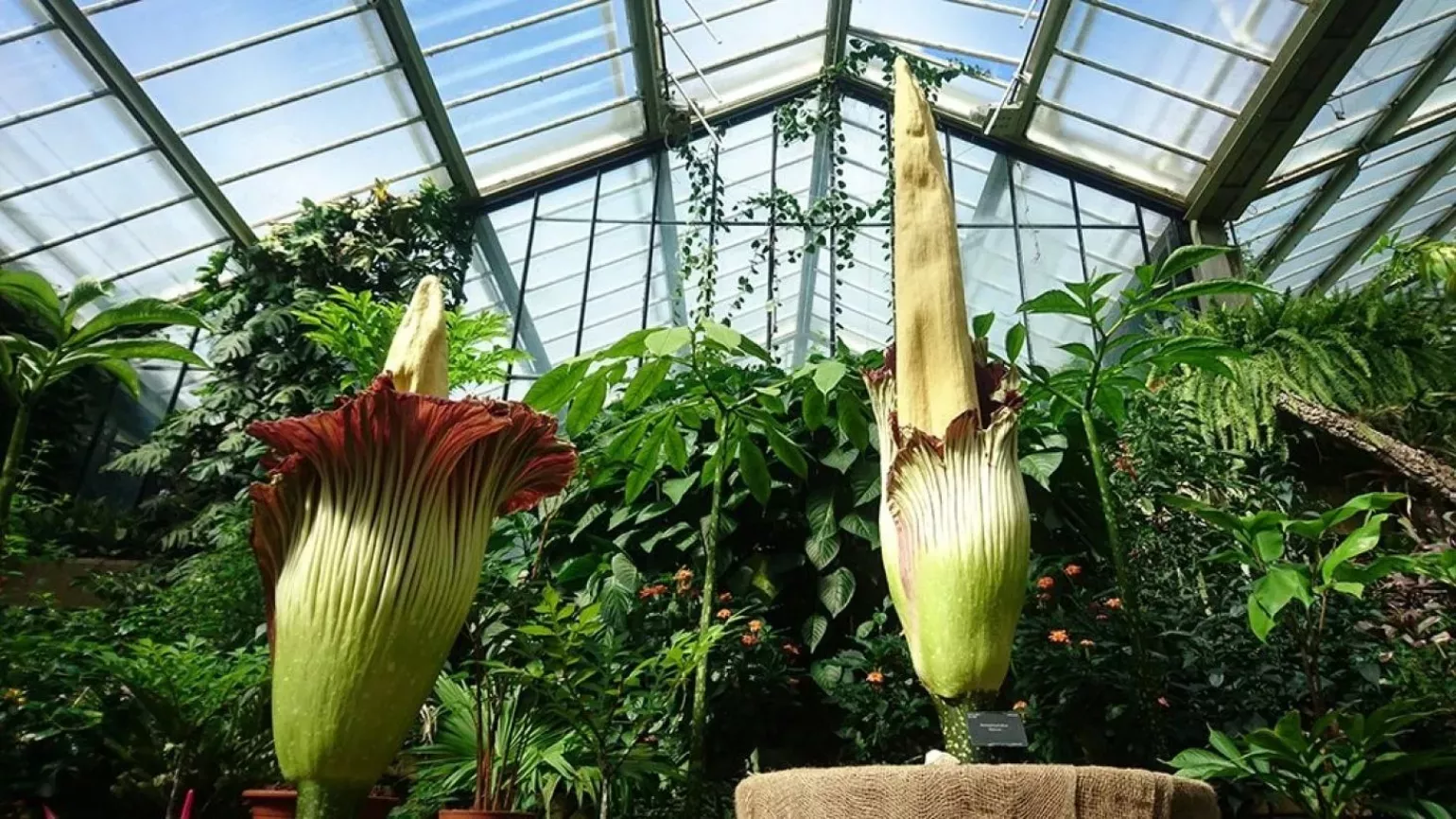
Plants that feed on poo
Think of a carnivorous plant, and you probably picture a Venus flytrap snapping its jaws on an unsuspecting insect.
But there’s more to carnivorous plants than insect-eating. Some have actually evolved mutually beneficial relationships with animals – they are so entwined that neither one could exist without the other.
Low’s pitcher plant (Nepenthes lowii) is a good example. Its pitchers are vaguely reminiscent of toilet bowls – and the toilet connection doesn’t end there!
The shape and size of the pitcher mouth matches the dimensions of a tree shrew. While feeding on nectar, the shrew poos directly into the pitcher, and the faeces provide the plant with essential nutrients.
The bat pitcher plant (N. hemsleyana) is another species that captures animal poo. This plant has a special relationship with woolly bats because it provides them with a daytime roosting spot.
The pitcher has a prominent ridge which is perfect for the bats to cling to. It also has an enlarged opening which reflects the ultrasound calls of the bats, helping them to locate the plant among dense vegetation.
The bats get a safe roosting site and, in return, the plant is nourished by the bat droppings.
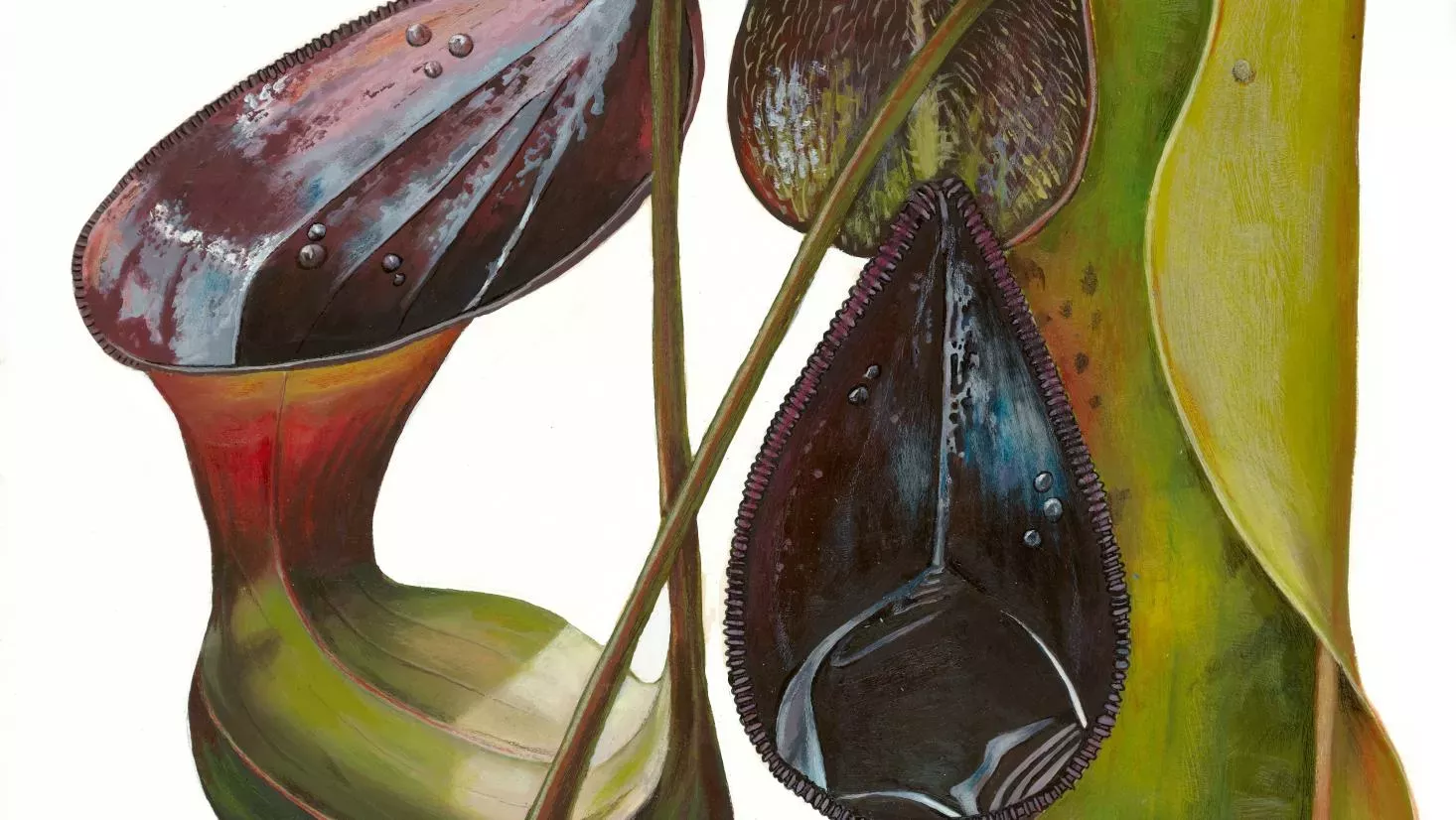
Orchid in disguise
Like many orchids, Rothschild’s slipper orchid (Paphiopedilum rothschildianum) cleverly dupes its insect pollinators with the false promise of a reward.
The sepals (a part of the flower found below the petals) are covered in unusual clusters of dark green, aphid-like spots. This disguise attracts passing wasps, who like to lay their eggs among groups of aphids.
The wasps lay their eggs on the flowers and then fall into the orchid’s pouch. Once inside, the wasps can’t get out the way they came in and are forced to leave by an exit at the base of the flower.
As they struggle to escape, the wasps pollinate the flower with pollen from previous Rothschild’s slipper orchids they’ve visited. And, in turn, they are smeared with the plant’s own pollen.
This orchid is extremely rare, and there are only a few places left on its native Mount Kinabalu, in North Borneo, where it still grows. Thankfully, with improved propagation techniques, its outlook is now more positive.
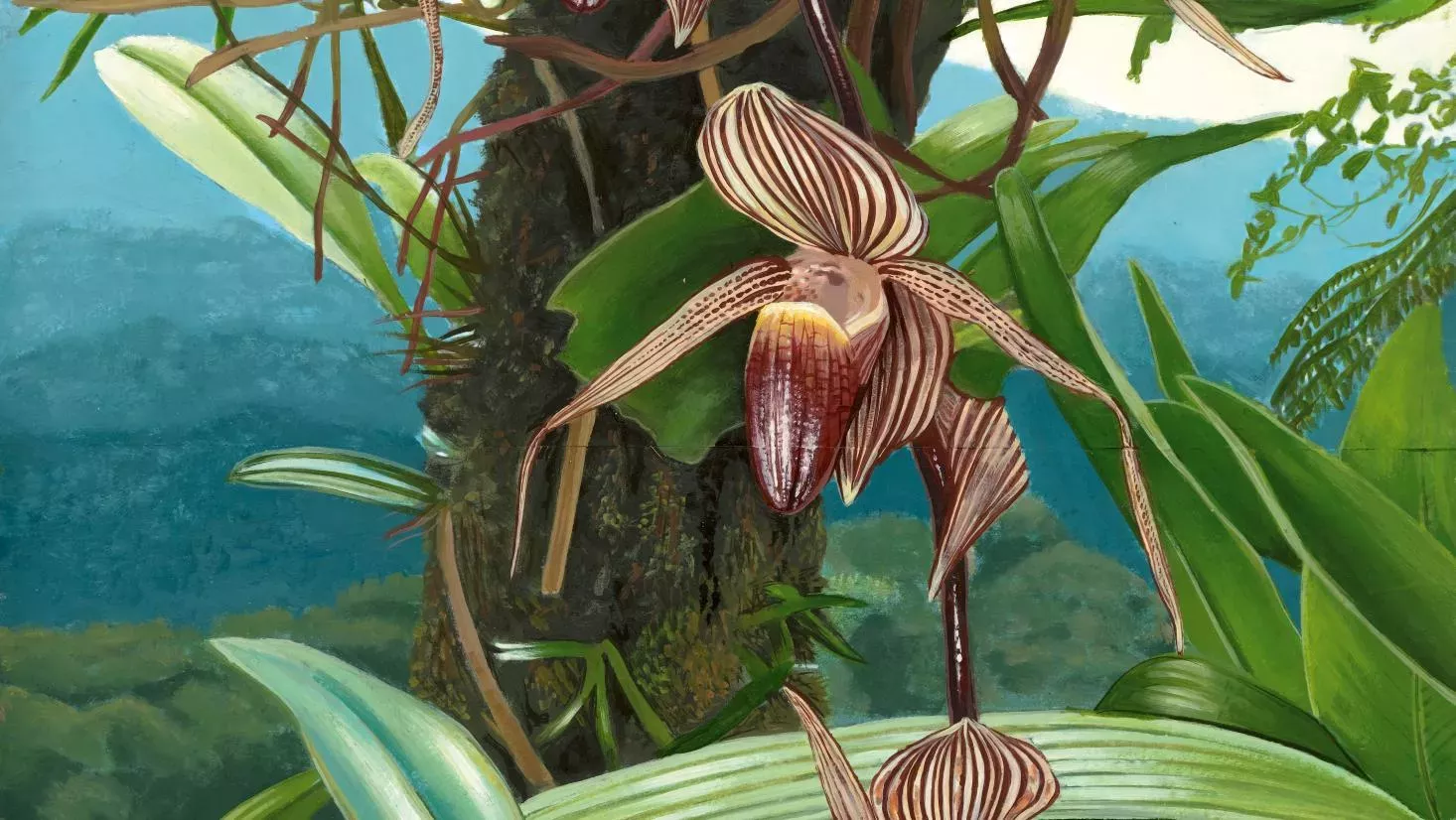
A desert survivor
Welwitschia mirabilis grows in barren deserts along the Atlantic sea-belt of Namibia and Angola. Some individual plants are believed to have lived for over 1,000 years in conditions of extreme drought.
The most unusual feature of Welwitschia is that it produces just two true leaves. They are the original leaves from when the plant was a seedling, which continue to grow and are never shed.
They grow throughout the long life of the plant, to a length of two to four metres, before splitting and fraying over time to form many strap-like segments.
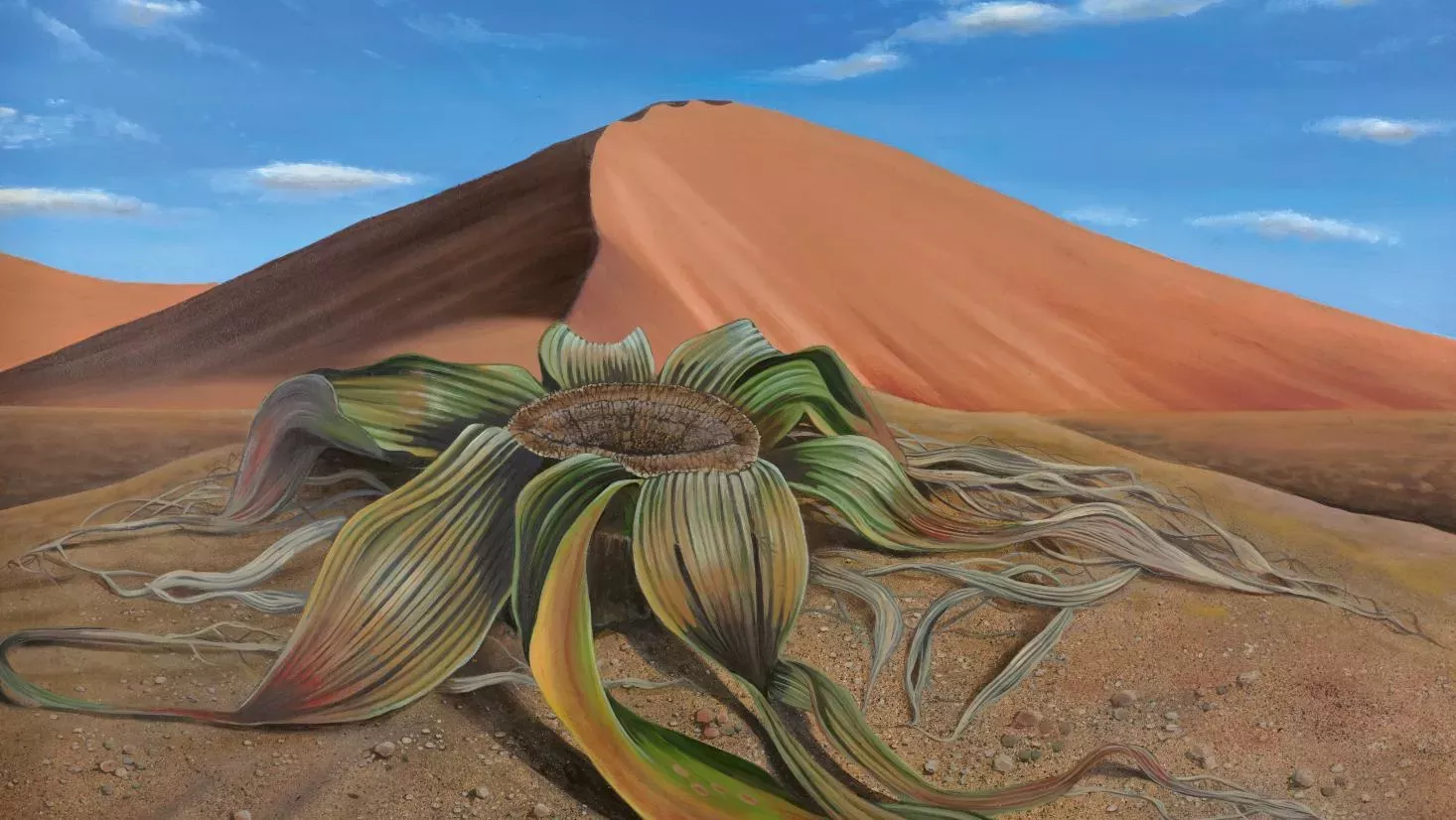
Escaping the Dutchman's pipes
Dutchman’s pipes (Aristolochia species) are a diverse group of plants that occur on most continents.
The flowers are typically suspended on vines and attract small flying insects.
When insects land on the flower, they crawl into a narrow tube which is covered in dense downward pointing hairs.
These hairs are easy to crawl down, but very hard to crawl up. This leaves the insects imprisoned in a floral chamber.
But it’s not the end of the road for these unlucky bugs. The hairs eventually wither, allowing the pollen-laden insects to escape – and cross-pollinate other Ductchman’s pipe flowers.
All illustrations by Chris Thorogood.
There are more weird and wonderful plants in Chris Thorogood's book or see them for yourself at the Princess of Wales conservatory.
